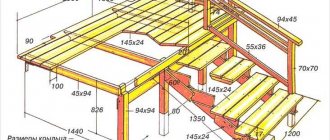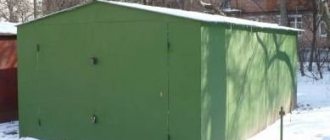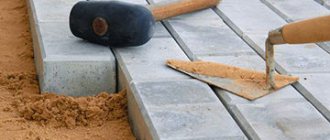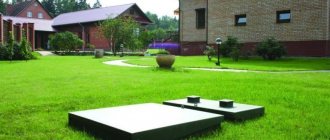Stone garden paths attract the eye with their uniqueness and beauty. Natural material looks so harmonious with garden flowers and plants that many summer residents choose natural stone when paving paths, despite the fact that there are more economical paving options.
Let’s take a closer look at how to properly make garden paths from natural stone, and what are the features of laying stone paths.
Natural materials for arranging paths
Speaking about natural stone for paths, we thereby define the concept of its natural origin. Natural origin gives an idea of the physical and mechanical characteristics, as well as appearance.
Sandstone.
Due to the ease of processing during mining, sandstone has an affordable price and is therefore very widespread. This material is not extremely strong, but is quite durable and frost-resistant. In appearance, it differs in geometric shapes and sizes: from wild stone to sawn slabs. May be green, brown, yellow, red or any other shade.
Shungite.
Slate has a layered structure and is therefore easily divided into flat slabs, in the form of which it is sold. It contains porous materials that can lead to the destruction of slabs under the influence of moisture during the cold season. The densest variety is quartzite.
Shungite is a very durable stone, perfect for paving. Withstands a large number of freezing cycles. Sold in the form of paving slabs and paving stones. The colors are different: from light gray to deep black. If there is quartz in its composition, shungite forms white or gold patterns.
Quartzite.
Quartzite is distinguished by its hardness, durability and frost resistance. Difficult to process. Sold in the form of paving slabs or paving stones. It has a beautiful multi-colored surface: from pure white to dark red and dark green. Thanks to this, it is popular among developers with above-average incomes.
The most durable stone material is made from granite. The color of granite products depends on the elements included in its composition.
The appearance of granite platforms and paths is distinguished by grace and beauty. When landscaping the area, granite is used for paving areas in front of the entrance and pedestrian sidewalks. Sold in the form of crushed paving stones and tiles.
Granite tiles
Granite is one of the hardest paving materials. With it you can create an excellent alley. It is naturally very special, with shades ranging from pink to gray to black.
It is permissible to make paths from both treated and untreated stone. You can lay it in a checkerboard pattern, or in the form of a Christmas tree or an arc.
To develop a “antique” design, it is better to use chipped paving stones, to create a smooth surface - sawn paving stones, and for paths - chipped-sawn paving stones.
Advantages of road materials made from natural stone
Paths made of natural stone emphasize the excellent taste of the owners and are a real decoration of the site. In addition to appearance, natural materials are valued for a number of advantages, which include:
- durability even under the most unfavorable operating conditions;
- strength and frost resistance;
- wide range of applications;
- ease of installation;
- a wide range of textures, colors and sizes.
The disadvantages of natural stone paths include high cost, the need for a reinforced base for installation due to the heavy weight of the coating, and the complexity of processing the material.
1 of 6
A natural stone.Cost of services in companies in Moscow and St. Petersburg
Laying of garden paths can be ordered from specialists. But you should understand that you will have to pay a different price for each stage of work. It all depends on the complexity and labor intensity of the process. The average price list for Moscow and St. Petersburg is as follows:
- site preparation, trench – 120 rub/m3;
- laying geotextiles (cost of material included) – 100 rub/m2;
- drainage (crushed stone layer 10 cm) – 80 rub/m2;
- backfilling sand 10 cm – 70 rub/m2;
- pouring mortar – 200 rub/m2;
- clinker laying – 600 rub/m2;
- granite paving stones – 1200 rub/m2;
- sandstone, flagstone – 600 rub/m2;
- installing a curb - 200 rubles. for 1 linear meter.
In addition, the craftsmen provide a guarantee for the work done. Its duration varies depending on the material used.
Stone paths in a summer cottage are a practical and durable decoration of the area and a universal element of different styles of landscape design.
Substrate preparation and installation
For the correct laying of natural stone on pedestrian and garden paths, there are three methods that differ in the technology of preparing the base. It could be:
- concrete;
- made of cement and sand;
- just made of sand.
The load-bearing concrete base is used for laying stone tiles, all types of paving stones and flagstones. It is good to place boulders and cobblestones on a sand bed. A mixture of cement and sand is universal for all types of products.
To prepare any type of foundation for a natural stone path, it is necessary to draw up a plan, carry out markings and install drainage drainage.
Planning and marking
Considering the high cost of natural stone, work must begin with drawing up an accurate plan. This will help determine the consumption of materials and avoid unnecessary costs. When drawing up a plan, you need to remember that laying garden paths with your own hands should take place at such a distance from the trees that in the future the growing roots will not damage the base.
Marking with pegs.
The width of the stone path should be up to 1.2 meters plus the thickness of the curbs. 2 people must separate on it when they meet. The slopes of the paved surface are made so that precipitation does not reach the buildings. The marking is done using pegs driven along the path in accordance with the drawn up plan, and a cord stretched along them.
Drainage layer design
To properly make drainage, it is necessary to remove the top layer of soil over the entire marked area and dig a trench to a depth of 30-40 cm. A thin layer of sand must be poured onto the bottom of the trench and the surface must be compacted well. Then cover it with a layer of non-woven geotextile, overlapping the sheets by 5-10 cm. This will effectively drain water into the ground and prevent the germination of weeds.
Excavation.
To create a drainage layer 10-15 cm thick, gravel or fine crushed stone is poured, compacted and covered with non-woven textiles. The purpose of the drainage layer is to drain rain, melt and groundwater from under the foundation into the ground.
If a curb is installed along the garden path, then this work is performed after compacting the surface of the drainage layer. If necessary, sand is added under the curb or a solution is laid. The height of the border edges above ground level is 5-7 cm.
Construction of a concrete base
To install a concrete base, a layer of sand 3-4 cm thick is poured onto the textile. This is necessary so that the non-woven fabric is not damaged by the sharp edges of the crushed stone. If you have installed a curb, then while pouring concrete it will serve as formwork, just cover it with plastic wrap first so as not to get it dirty. If there is no border, then install formwork from boards or durable sheet material.
Types of Garden Paths
Depending on the stones used and the method of laying, the following paths are distinguished:
- Bulk. Geotextiles are laid in the dug ditch, and screenings, pebbles or gravel are poured on top. Brick borders are made on the sides. For reliability, granite tiles are installed in the center of the path. Fix the material with a layer of sand.
- Jellied. The most reliable type of tracks. Concrete solution is poured into the prepared ditch. Natural stone and paving stones are laid on top. The base can withstand heavy loads, so they are made even near garages.
- Natural. Well-trodden paths. No costs required. A significant drawback is that it is difficult to pass during rainfall. They are quickly washed away by water. A good solution would be to decorate them with river pebbles, cobblestones, and old bricks.
Most owners of country houses choose flooded paths that are not afraid of precipitation. They are durable and resistant to mechanical stress.
sand cushion
This is the simplest, cheapest, but also not so reliable type of foundation. It is not recommended for use in places with possibly increased load, heaving and mobile soils, and high groundwater levels.
To prepare a sand cushion, sand is poured into the trench in layers and compacted, periodically spilling with water. The stone is laid on this compacted sand.
Laying process.
Laying natural stone
The technology for laying natural stone depends on its thickness and configuration. Smooth paving slabs and paving stones are laid almost close to each other from one edge to the other. First, one row is laid out along the length, a meter and a half long.
And then the transverse rows are laid. The area is filled in 1-2 sq.m increments, with gradual advancement. During work, the flat surface is constantly checked with a building level for the presence of a slope for water drainage and the compliance of the tiles in height. If the tiles have sagged, add the mixture and level the protruding elements with a rubber hammer.
Tapping slabs.
After laying paving slabs or paving stones of any type, the seams are carefully sealed with a cement-sand mixture. To do this, it is scattered over the surface of the completed paving and swept with a soft brush. Then the surface is watered. After 3 days the operation is repeated.
Uneven slabs, such as sandstone and flagstone, are selected according to their shape so that the seams between them are minimal. If necessary, you can use a grinder with a diamond blade for trimming. The seams are not sealed after installation, but simply covered with sand and spilled with water.
On the original paths made of cobblestones and boulders, the stone is buried a little, leaving about half the volume on the surface.
Conclusion
Those who have chosen stone garden paths, oh, because naturalness, like the classics, is always relevant, and the service life of a properly laid path will be more than one decade. The costs and efforts put in will pay off in spades.
If price is at the forefront of the issue, budget tracks are at your service. I like paving slabs, but the cost is confusing - homemade ones will help out. In the video - how to lay paths simply, quickly, and reliably.
Subscribe to our Telegram channel Exclusive posts every week
Tool for the job
Before starting work, you need to prepare tools that will help you do everything quickly and correctly:
- roulette;
- stakes and cord for marking;
- construction level;
- shovel;
- hammer and mallet with rubber head;
- metal brush;
- vibrating plate for compacting soil;
- Bulgarian;
- concrete mixer, plastering rule, trowel for bulk concrete work (when choosing a method of laying on concrete).
Advantages of using flagstone as a road surface
Modern paving materials are varied. To lay paths, rubber and ceramic tiles, wood, crushed stone of different shades, paving stones, etc. are used. But no artificial surface can compare with the decorative effect of natural stone.
Flagstone is the name for shale rock - sandstone or limestone, which independently splits into tiles of different thicknesses during mining. Flat stone elements require virtually no processing and are used for finishing walls and floors, as well as garden paths intended for pedestrians.
In addition to its decorative appearance and variety of shades, flagstone has many advantages that make it in demand among homeowners:
- smooth and non-slip surface of the slabs;
- environmental friendliness of the material;
- frost resistance;
- minimal moisture absorption;
- strength;
- color fastness;
- ease of processing and installation.
Flagstone is easy to purchase from construction companies, it is inexpensive and accessible to different segments of the population. In places where it naturally comes to the surface, you can extract the stone yourself by choosing tiles of the right size.
A properly designed project determines the success of the work
The existing well-trodden paths along which the residents of the house habitually move around the site will help to lay out garden paths so that they are convenient. To make the garden more decorative, you can slightly change the configuration of the paths. The main directions must be preserved. To evaluate the design in advance, make a sketch drawing of individual corners of the garden.
To draw up a project, you will need a plan indicating the location of all outbuildings. It will help determine the total length of the paths and the amount of work when constructing recreation areas. It is advisable to take into account the location of temporary design elements: garden benches, flower beds, trees, etc.
The width of the paths should be sufficient to miss the oncoming person. It is irrational to make it larger than 1-1.2 m. The dimensions of the sites are determined arbitrarily.











